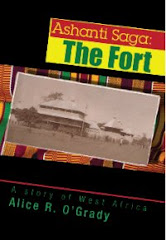Another interesting drive: Tucson to the San Diego area. West of Tucson the desert changed completely to a SANDY desert, which I hadn't seen before. Like in the movies we watched as kids. Then hills covered with boulders that looked like huge potatoes and little vegetation. Once over the hills I noticed how lush the growth was becoming, and it became moreso as I approached San Diego. Such greenery! I appreciated it with green-starved eyes, but also kept thinking of how much water it took to keep it that way.
Stayed with my friend Fern Gordon in nearby San Marcos, and she threw a wonderful luncheon after which I spoke and sold some books. Also spoke at Oceanside Library one evening. About 10 teenagers and an equal number of adults (half of them friends of mine) attended, but by half-way through all the teens had left. What a testament to my winning ways with words! I was told that some of them had to get home before it was very late, which was some comfort.
The drive to Los Angeles was long, on a crowded freeway, but there were some lovely views of the Pacific Ocean. I'm so glad I don't have to drive in such traffic at home.
Saturday, February 28, 2009
Sunday, February 22, 2009
Co-Housing in Tucson
Driving to Tucson from El Paso showed me an interesting change in landscape. Whereas El Paso's desert is dry with scattered scrubby plants, approaching Tucson I saw sajuaro cacti, tall and noble, often with one or more "arms," which don't start to grow until the plant is at least 50 years old. Other, shorter cacti were visible. On a vist to the wonderful Desert Museum I learned a lot about these and other living things of the desert.
I stayed with former Peace Corps Volunteer (Turkey) Jackie Day in Milagro (Miracle) Co-Housing Community whose unifying principle is "To live lightly on the land." Interesting place: about 28 residences, some of them duplex, occupied by young families with small children up to retired folks. Each house has a solar unit on the roof that provides heat for the water supply, and large tanks are at each house to catch rainwater off the roof. Their grey water is piped underground to a "wetland" where a certain kind of reed has been planted to clean the water. The black water from toilets eventually goes there too, after settling. All this is piped back to water the plants in the community, most of which are local and therefore don't require much water. But they do have some citrus and fig and some other fruit trees, I think.
One would expect to see a community garden there, but as with almost any community with voluntary membership, there are a few who don't want to go along with the majority, and there is no garden, though some individuals do grow vegetables on their own property.
I attended a vegetarian dinner at the home of another resident and talked to about ten women about West Africa, showing my artifacts. Ten-year-old resident Emily modeled carrying a baby on her back.
At a thrift shop in Florida where I had hoped to buy a baby doll for such demonstrations I learned that baby dolls can't be sold unless they are tested for lead in the paint. So my "baby" is a teddy bear.
I stayed with former Peace Corps Volunteer (Turkey) Jackie Day in Milagro (Miracle) Co-Housing Community whose unifying principle is "To live lightly on the land." Interesting place: about 28 residences, some of them duplex, occupied by young families with small children up to retired folks. Each house has a solar unit on the roof that provides heat for the water supply, and large tanks are at each house to catch rainwater off the roof. Their grey water is piped underground to a "wetland" where a certain kind of reed has been planted to clean the water. The black water from toilets eventually goes there too, after settling. All this is piped back to water the plants in the community, most of which are local and therefore don't require much water. But they do have some citrus and fig and some other fruit trees, I think.
One would expect to see a community garden there, but as with almost any community with voluntary membership, there are a few who don't want to go along with the majority, and there is no garden, though some individuals do grow vegetables on their own property.
I attended a vegetarian dinner at the home of another resident and talked to about ten women about West Africa, showing my artifacts. Ten-year-old resident Emily modeled carrying a baby on her back.
At a thrift shop in Florida where I had hoped to buy a baby doll for such demonstrations I learned that baby dolls can't be sold unless they are tested for lead in the paint. So my "baby" is a teddy bear.
Subscribe to:
Comments (Atom)

